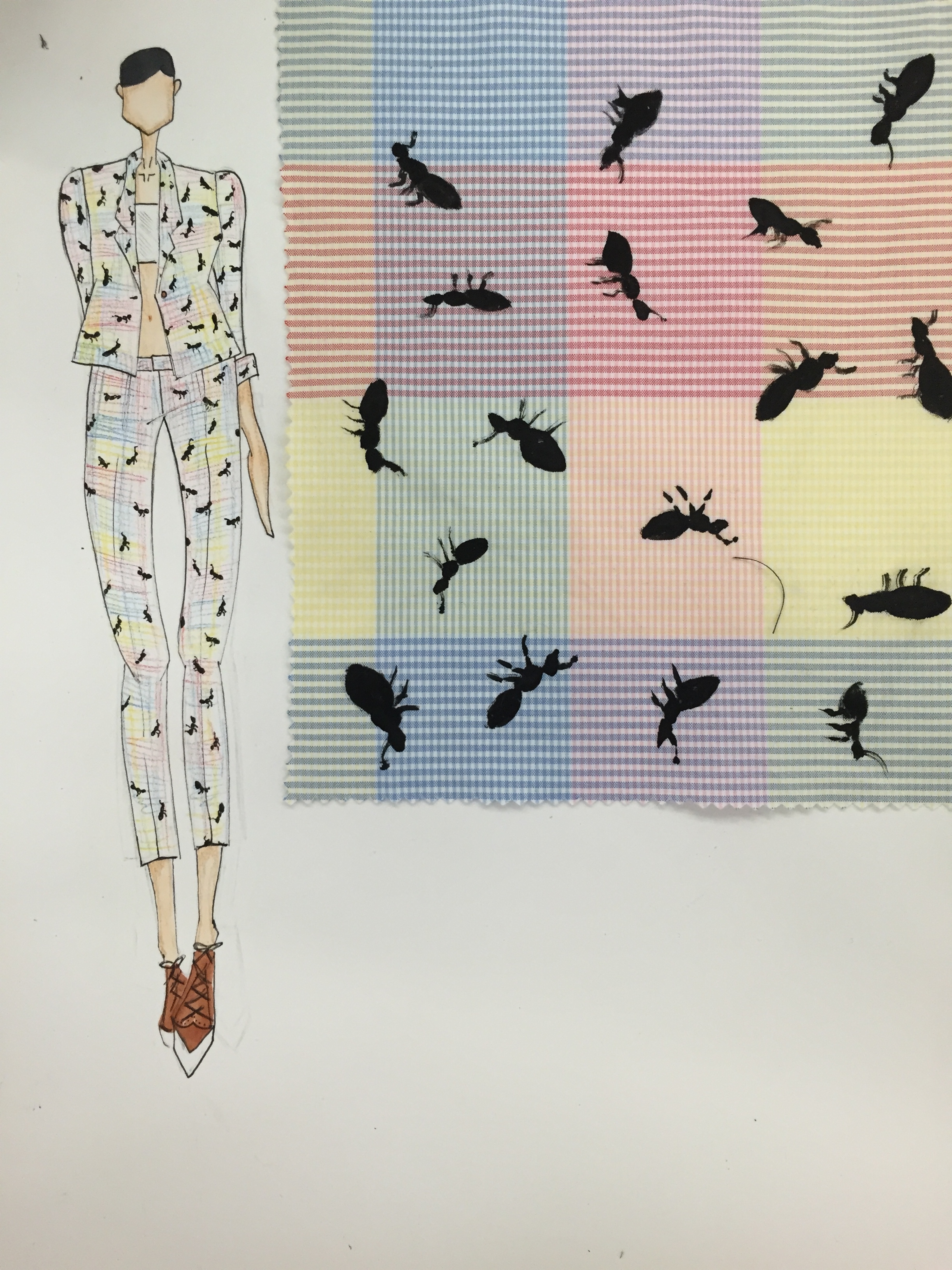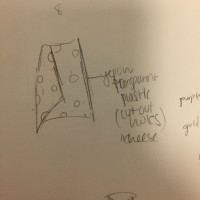When I was faced with the prompt about how I become clothes, I referred back to the “Who am I” project. I used the initial collage that I created to represent myself as a source of inspiration. This collage is full of whimsical symbols, patterns, dreams of travel, and a foward-thinking idea of freedom and nostalgia combined with happiness. These are the ideas that are integral to who I am as a person and a designer.
As a result, I took influences both directly from the collage imagery (for example in the first image below of the cloud and rainbow dress) and from the underlying ideas about who I am. The designs that I illustrated, created flats for, fabrics I manipulated, and drape that I tested each embody varied ideas of who I am through the whimsical and lighthearted longing for happiness and fun. When I think of clothes and expression, I want to design fun garments because they act as a reminder to enjoy life and be positive. If I am to put anything into this world, I want it to have a positive impact on people whether they are viewing the images that my garments project or consuming my garments and image.
Illustration Process:
I begin the illustration process by quickly drawing croquis of the ideas. These ideas come to me at random time as I experience life and take the inspiration from around me. From the croquis, I go on to illustrate more defined looks with detail and color. I used mixed media and pulled from my collage in the first garment and the pattern in the swimwear looks. Where the influence is not directly visible, it is felt through the sense of nostalgia, and happiness.
Fabric Manipulation Process:
In the fabric manipulations, I added quirky elements to traditional textiles, experimented with painting, and attempted creating my own textiles. I hand-embroidered for the first time on white cotton, which I image would be translated into the collar of a white button down top. The houndstooth and glitter vinyl piece came together because of the monochrome twist on the traditional textile. I played around with adding the pailletes to the painted ombre and crinkled textile, but decided to add them to a yellow-painted piece of cotton poplin to create an eye-popping contrast. I am interested in weaving and creating textiles so I added plastic bag strips to the neoprene mesh swatch to test out creating a new textile. As I created this manipulations, I envisioned using these fabrics in garments and I see how I would move forward in translating these ideas into garments.
Fabric Manipulations in Illustrations:
As a continuation of this project, I created new ideas using these manipulations to enforce my ideas. I am interested in textile design and I think fabric and color is integral to my aesthetic so I know it is important to incorporate these ideas into my illustrations and other design ideas. As a result, I will keep this in mind in the future and work on creating my own textiles through application, weaving, or print.
Flats Process:
I used the technique I have been working on in Visual Communications of drawing on tracing paper over an image of a croquis to create hand drawn flats. This technique allows for attitude and initial ideas to be put into flats, but I also wanted to use the digital format of flats to create one flat in order to display the way that I think my hand drawn flats will translate moving forward. Going forward I also want to learn more about the technical aspect of garment construction to enforce the accuracy of the flats.
Draping Process:
The draping process for me was new because we have started with flat pattern-making in Creative Technical Studio, however, I think that as I move forward it will be a way to show my ideas physically and enforce the fabric manipulations aspect and bring the illustrations to physical form.




























